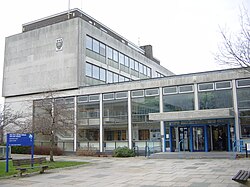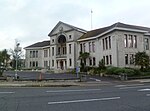RAF Hamworthy
Royal Air Force stations in DorsetRoyal Air Force stations of World War II in the United KingdomSeaplane bases in EnglandSeaplane bases in the United KingdomUse British English from May 2013
Royal Air Force Hamworthy or more simply RAF Hamworthy is a former Royal Air Force Coastal Command seaplane base at Poole Harbour in Dorset, England which was operational between 1939 and 1948. During the Second World War, it was used by the Royal Air Force, the Royal Navy and BOAC.
Excerpt from the Wikipedia article RAF Hamworthy (License: CC BY-SA 3.0, Authors).RAF Hamworthy
FP 88,
Geographical coordinates (GPS) Address Nearby Places Show on map
Geographical coordinates (GPS)
| Latitude | Longitude |
|---|---|
| N 50.705555555556 ° | E -1.9583333333333 ° |
Address
Parkstone Yacht Haven
FP 88
BH14 8EH , Parkstone
England, United Kingdom
Open on Google Maps









